As we navigate the complexities of our modern world, it’s crucial for companies to adopt sustainable business practices. Among the most essential aspects of sustainable business is waste management. Setting and achieving waste reduction goals can have tangible benefits for companies, including cost savings and improved public and environmental relations.
Effective waste reduction strategies also help shape a more eco-friendly world and can significantly reduce landfill waste, greenhouse gas emissions, and our carbon footprint. Let’s dive into the opportunities and best practices to manage waste and reduce waste efficiently as a company, keeping in mind the essential components of sustainability and environmental stewardship.
Key Takeaways
- Waste reduction goals help businesses achieve cost savings and enhance their environmental reputation.
- Implementing a waste management program can lead to improved operational efficiency and sustainability.
- Conducting waste audits and educating employees is essential for waste reduction success.
- Companies must focus on reduction, recycling, and composting practices for effective waste management.
- Technology investment and sustainable procurement practices play a crucial role in achieving zero waste ambitions.
31 Waste Reduction Goals for Companies
Here is a list of 31 waste reduction goals for companies, along with supporting statistics and tips:
1. Conduct a waste audit
- Statistics: Companies that conduct waste audits reduce waste by an average of 42%
- Tips: Analyze your waste streams to identify top areas for reduction. Track waste generation over time.
2. Adopt a company-wide waste reduction policy
- Statistics: Companies with formal policies have 9% higher diversion rates
- Tips: Get leadership commitment to reduction targets. Communicate policy importance to all staff.
3. Reduce paper use
- Statistics: U.S. offices use 12,000 sheets of paper per employee annually
- Tips: Set printers to double-sided. Use online filing and cloud collaboration tools.
4. Eliminate single-use plastics
- Statistics: 8 million tons of plastics enter the ocean each year
- Tips: Provide reusable cups, plates and cutlery in kitchen areas. Avoid plastic packaging.
5. Start a composting program
- Statistics: Composting 1 ton of food scraps avoids 1 ton of CO2 emissions
- Tips: Provide compost bins at snack areas/cafeterias. Work with haulers to collect compost.
6. Reduce packaging from suppliers
- Statistics: 67 million tons of packaging waste are landfilled annually
- Tips: Require minimum packaging standards from suppliers. Reuse incoming packaging.
7. Recycle e-waste properly
- Statistics: Up to 70% of landfilled electronics works upon arrival
- Tips: Provide secure e-waste bins. Vet recycling partners to prevent illegal dumping.
8. Donate surplus furniture/supplies
- Statistics: Reuse extends product lifespans by 2-10 times
- Tips: Partner with charities and reuse networks to redistribute surplus items.
9. Start an office swap shop
- Statistics: Supply exchanges divert 20 tons per 100 employees
- Tips: Provide space for employees to exchange reusable items internally.
10. Eliminate individual waste bins
- Statistics: Shared bins reduce waste volumes by 17%
- Tips: Replace personal bins with centralized sorting stations for recycling/landfill streams.
11. Offer mugs instead of disposable cups
- Statistics: 25 billion disposable cups are landfilled annually
- Tips: Provide all staff with reusable mugs. Use compostable cups for meetings/visitors.
12. Set printer defaults to double-sided
- Statistics: 1 million trees could be saved annually with double-sided default
- Tips: Update printer settings. Communicate double-sided as mandatory office standard.
13. Enable eco font as the default
- Statistics: Eco fonts use 20% less ink
- Tips: Install font packages like Ecofont that have tiny holes to reduce ink usage.
14. Digitize filing and data systems
- Statistics: U.S. offices generate over 2 million tons of paper waste annually
- Tips: Transition records management and collaboration systems online whenever possible.
15. Provide centralized recycling bins
- Statistics: Clearly labeled bins double recycling rates
- Tips: Locate bins conveniently. Use images/text to indicate materials accepted.
16. Post reminders at waste stations
- Statistics: Signage boosts recycling accuracy by 30%
- Tips: Use posters and labels with photos of recyclable items. Change messaging quarterly.
17. Train staff on zero waste
- Statistics: Training increases recycling rates by 156%
- Tips: Include waste sorting info in onboarding. Schedule refresher webinars every 6 months.
18. Designate zero waste champions
- Statistics: Champions increase recycling rates by 20%
- Tips: Assign sustainability captains for every department. Have them spot check bins.
19. Track and report metrics
- Statistics: Tracking boosts recycling rates by 30% over untracked programs
- Tips: Weigh landfill/recycling dumpsters. Calculate diversion rates monthly.
20. Recognize top performers
- Statistics: Incentives improve recycling accuracy by 80%
- Tips: Award prizes or shoutouts to teams and individuals with excellent compliance.
21. Partner with zero waste vendors
- Statistics: Specialized vendors divert 62% more waste
- Tips: Work with certified zero waste haulers and processors. Audit downstream handling.
22. Compost food scraps
- Statistics: 95% of food waste can be composted
- Tips: Provide compost bins in kitchens. Collect scraps for transfer to commercial composters.
23. Eliminate single-use food serviceware
- Statistics: 40% of plastic produced is single-use food packaging
- Tips: Provide reusable serviceware. Use compostable products for to-go containers.
24. Buy secondhand equipment
- Statistics: Extending IT lifecycles from 4 to 6 years avoids 29% emissions
- Tips: Procure refurbished electronics and furniture. Sell old items for resale by others.
25. Rent equipment instead of purchasing
- Statistics: Product rentals conserve up to 95% materials
- Tips: Rent items used infrequently. Share larger equipment with other organizations.
26. Switch to renewable energy
- Statistics: Recycled paper reduces energy use by 27%
- Tips: Install on-site solar generation. Enroll in renewable energy plans from utilities.
27. Require sustainable packaging from suppliers
- Statistics: Only 14% of plastic packaging is collected for recycling
- Tips: Mandate recyclable and minimal packaging. Reject non-compliant shipments.
28. Purchase recycled content products
- Statistics: Recycled paper uses 60% less energy and 58% less water
- Tips: Require minimum 30% post-consumer recycled material in paper, tissues, boxes and bags.
29. Implement paperless processes
- Statistics: U.S. offices spend $120 per filing cabinet annually
- Tips: Shift communication and document storage online. Restrict printing.
30. Ask suppliers to take back packaging
- Statistics: Loop reuse programs retain 75% embedded product value
- Tips: Negotiate contracts where vendors collect and reuse their packaging.
31. Join reuse networks
- Statistics: Online exchanges save 80-90% disposal fees
- Tips: Participate in regional materials markets. Donate items through materials exchange platforms.
Understanding the Importance of Waste Reduction in Business
Waste reduction, an essential component for fostering a sustainable business, yields environmental, economic, and social benefits that collectively improve a company’s bottom line and community impact. By understanding the advantages of waste management, organizations can adopt cost-saving measures and uphold their corporate social responsibility, consequently facilitating environmental sustainability and solidifying their sustainable business practices.
Environmental Benefits of Waste Reduction
One of the primary incentives for implementing waste reduction strategies within a business is the potential to substantially decrease the amount of waste that reaches landfills, thereby lessening greenhouse gas emissions and promoting environmental conservation. Effective waste management enables companies to augment the value of initial material inputs through recycling and extended lifecycle, reducing landfill waste and endorsing a greener business model.
Economic Advantages: Cost Savings Through Waste Management
Integrating waste management measures can lead to substantial savings for businesses. By reducing raw material requirements and handling costs, waste reduction initiatives can prove advantageous for companies seeking cost-saving measures. Waste management plans offer a significant avenue for cost savings and operational efficiency, contributing to the overall economic health of the company.
Enhancing Corporate Social Responsibility
Corporate social responsibility (CSR) is a vital facet in the business world, incorporating environmentally conscious practices that demonstrate a commitment to community welfare. Embracing waste reduction practices as part of CSR enhances a company’s social equity, strengthens sustainable business endeavors, and showcases dedication to environmental sustainability. In essence, waste reduction, as a key aspect of CSR, aligns with sustainability goals that promote environmental, economic, and social upliftment.
Establishing a Waste Reduction Management Plan
Implementing a waste reduction management plan serves as a vital step towards transforming a business into an environmentally friendly and sustainable establishment. Developing such a plan helps streamline waste handling processes, minimize waste production, and enhance recycling initiatives.
Identifying Waste Audits and Reduction Opportunities
Waste audits provide comprehensive assessments of current waste generation and disposal practices within a company. By identifying the types and amounts of waste produced, businesses can pinpoint reduction opportunities and prioritize areas for improvement. Integrating effective waste reduction strategies into the company’s sustainability plan will ultimately help decrease its environmental impact and conserve valuable resources.
Creating Formal Waste Management Goals
Setting clear waste management goals is essential for measuring the success and progress of a waste reduction management plan. This includes developing a budget, outlining timelines, and establishing key performance indicators. Regular assessments of these goals will help businesses refine strategies and align them with their long-term sustainability objectives.
Employee Education and Participatory Strategies
Effective waste reduction management plans involve employee education and participatory strategies. By providing employees with training on waste reduction techniques, businesses foster a collective culture that supports sustainability. In addition, encouraging employee participation in waste audits, reduction efforts, and recycling initiatives can further enhance the implementation and success of the plan.
Overall, a well-executed waste reduction management plan not only helps companies reduce their environmental impact but also contributes to cost savings and improved operational efficiency. As a result, businesses can effectively work towards achieving their sustainability goals and becoming more eco-conscious establishments.
Innovative Methods to Minimize Waste Generation
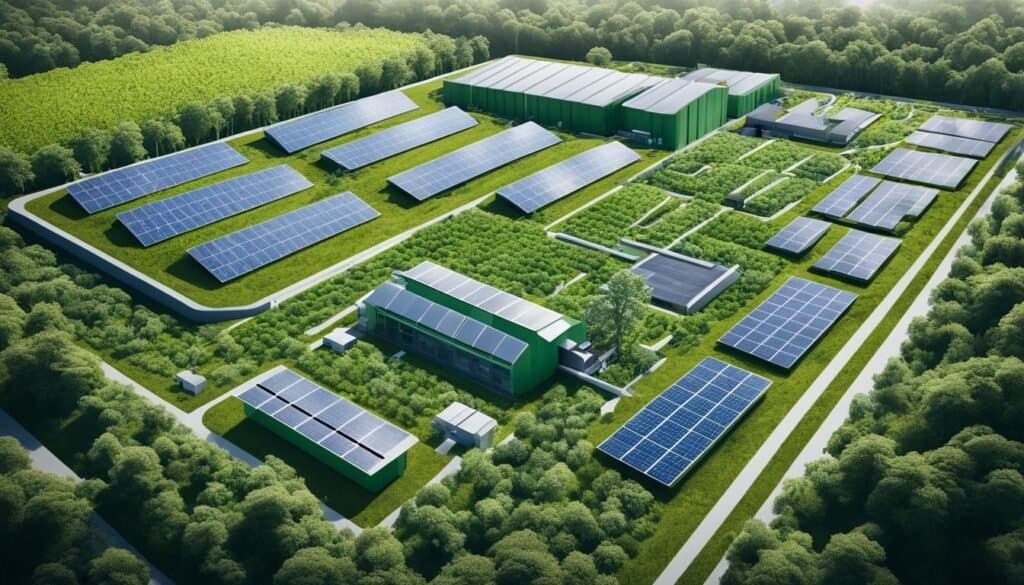
In the pursuit of sustainability initiatives, businesses today are increasingly adopting innovative waste reduction methods and eco-friendly approaches that help reduce waste generation and minimize their environmental impact. By rethinking waste strategies and implementing technological advancements, companies can drive more sustainable practices and conserve natural resources.
One such method involves redesigning current processes across industries, which encompasses modifications to equipment, product formulations, manufacturing procedures, and switching to environmentally benign raw materials. Additionally, improvements in maintenance, training, and inventory control can significantly decrease waste at its source.
Through these proactive measures, businesses can drastically reduce waste output, thereby promoting eco-friendly practices and reducing their environmental impact.
Let’s explore some examples of innovative waste reduction techniques:
- Redesigning packaging materials to use less material without compromising product protection
- Implementing closed-loop systems that recycle waste materials back into the production process
- Switching to renewable, biodegradable, and compostable materials for manufacturing operations
- Optimizing logistics and transportation processes to reduce waste and energy consumption
These waste management innovations not only conserve natural resources but also enhance operational efficiency and align with robust sustainability goals. By embracing these concepts, companies can transition from a linear “take-make-dispose” model to a more circular economy, hingeing on reevaluating and redesigning current processes across industries. Which focuses on the continuous use and reintegration of resources, as seen in the table below:
| Linear Economy | Circular Economy |
|---|---|
| One-time use of resources | Maximizing the use and value of resources |
| High waste generation | Minimization of waste generation through recycling, repurposing, and refurbishing |
| Depletion of non-renewable resources | Emphasis on renewable and sustainable resources |
In conclusion, innovative waste reduction methods play a critical role in promoting sustainable practices and minimizing waste generation. By rethinking traditional processes and embracing new technologies, businesses can significantly diminish their environmental impact and align more closely with sustainability goals.
Waste Reduction Goals for Companies: Implementing the 3Rs and Beyond
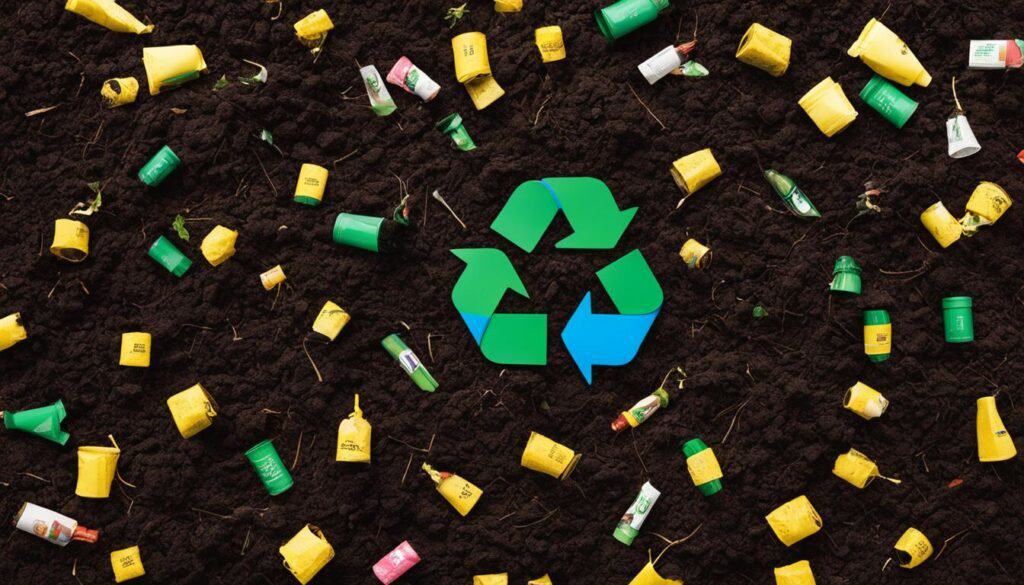
The cornerstone for achieving waste reduction goals lies in the mantra of the 3Rs – Reduce, Reuse, and Recycle – coupled with a pivotal fourth R – Rethink. Implementing these principles, companies can substantially curtail waste generation, amplifying their sustainability initiatives and pushing towards zero waste ambitions. By adopting source reduction, reuse strategies, recycling programs, and viewing waste as a resource, firms can maximize their resources, encourage sustainable business operations, and contribute to environmental conservation.
Source Reduction Techniques for Less Waste Output
Source reduction refers to modifications in production processes that decrease waste creation while maximizing raw material efficiency. These techniques can include refining product designs, integrating eco-friendly materials, and improving production efficiency. By implementing source reduction measures, companies can limit waste output throughout the material lifecycle.
Maximizing Resources: Reuse Strategies
Reuse strategies empower companies to extend the usable life of waste material before it becomes disposable. Examples include repairing damaged items, donating unused materials, upcycling, and repurposing waste products for different applications. Such approaches promote waste minimization and contribute to maximizing company resources.
Recycling Programs: Streamlined and Effective
Effective recycling programs are crucial for sustainable business operations. These programs facilitate the recovery of usable materials from waste, replacing the need for virgin resources and curtailing landfill contributions. By developing and implementing a streamlined recycling program, companies can minimize waste and ensure the effective utilization of materials throughout their lifecycle.
The Fourth R: Rethinking Waste as a Resource
Rethinking waste involves treating it not as an unusable byproduct but as a resource that can be skillfully reincorporated into production cycles. Implementing this principle supports the circular economy concept, ensuring materials remain in use and waste outputs are minimized. By adopting this mindset, companies can foster a culture of waste reduction, environmental conservation, and resource maximization in their operations.
Investing in Technology and Equipment for Waste Reduction
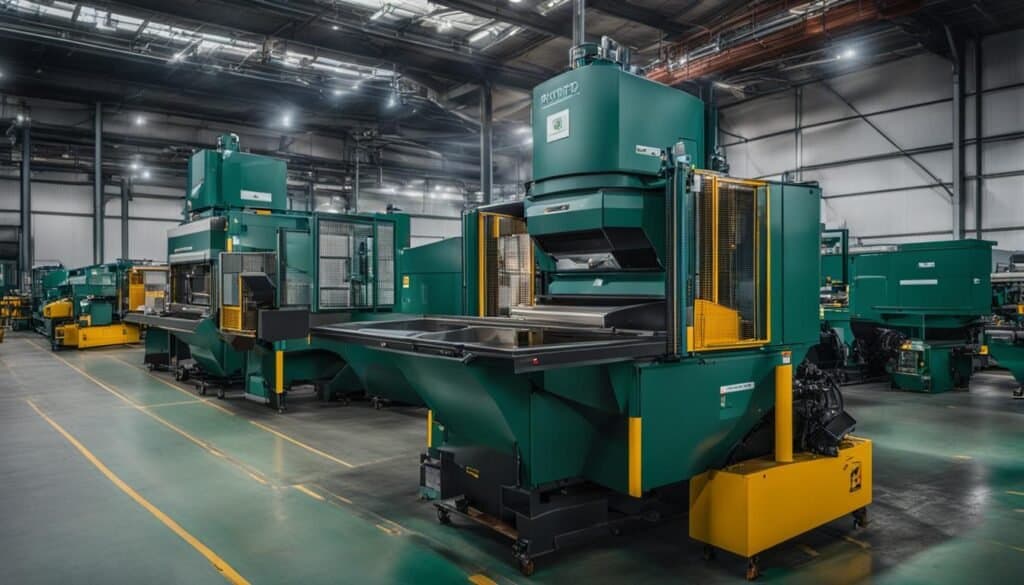
Corporate investment in technology plays a crucial role in fortifying waste reduction efforts. Innovations such as smart appliances, high-efficiency fixtures, and comprehensive waste sorting systems aid in streamlining operations and reducing waste outputs. Upgrades to energy and resource-efficient equipment can leverage technology to enhance eco-friendly practices within an organization, while the incorporation of digital tools can advance the transition to paperless environments, thus minimizing paper waste.
As such investments can require a significant outlay, a clear budget, and timeline, along with well-defined success metrics, are essential to gauge the efficacy of these upgrades and ensure they contribute effectively to waste management and sustainability ambitions.
The Role of Smart Appliances in Waste Management
Smart appliances have become an integral part of reducing waste generation and enhancing waste management. These intelligent devices optimize energy consumption, enable remote monitoring, and provide real-time data for better operational efficiency. As a result, they minimize waste output, maximize resource usage, and support eco-conscious technology within a company’s waste reduction efforts.
Equipment Upgrades for Eco-Friendly Operations
Upgrading existing equipment with waste management equipment that focuses on energy and resource efficiency can significantly bolster a company’s waste reduction endeavors. By investing in equipment upgrades, businesses can reduce their environmental impact, improve operational efficiency, and incorporate sustainable practices into everyday operations. Eco-friendly equipment options may include green technology innovations, waste minimization technology, and energy-efficient fixtures.
Utilizing Digital Solutions to Reduce Paper Waste
Digital solutions such as paperless systems, electronic invoicing, and digital document management can drastically curb a company’s paper waste output. Transitioning to such platforms not only facilitates an eco-friendlier work environment but also streamlines workflows and improves data management. By embracing digital tools, organizations can demonstrate their commitment to waste reduction and align themselves with the growing trend of sustainable business practices.
Engaging in Sustainable Procurement Practices
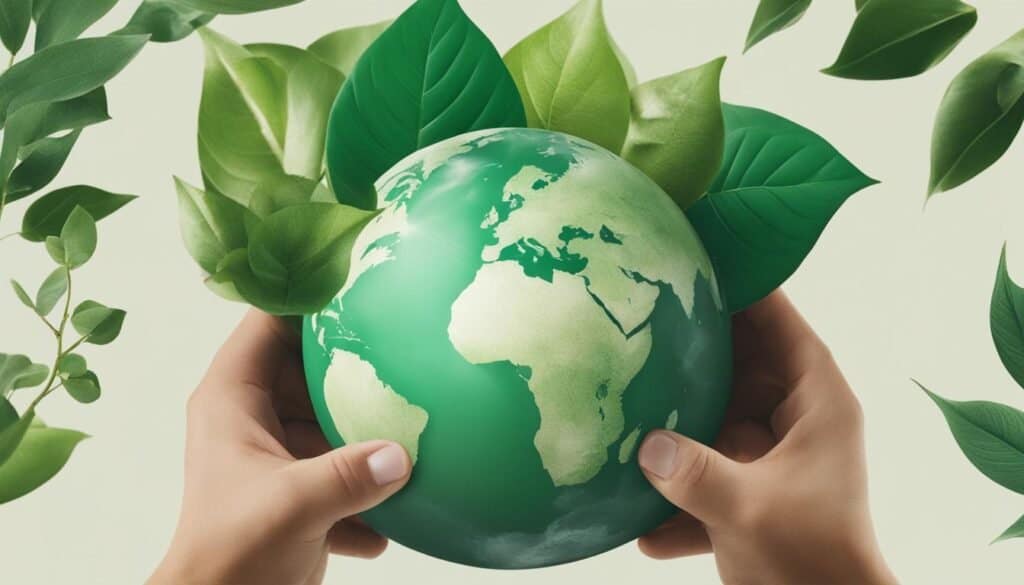
Sustainable procurement practices are key to solidifying a company’s commitment to waste reduction. These practices involve decision-making processes that account for the entire lifecycle of purchased materials, focusing on those with minimal environmental impact.
Sustainable sourcing emphasizes responsible material selection, including opting for recyclable or compostable packaging and supporting suppliers with recognized green initiatives. Integrating environmental considerations into purchasing guidelines reduces the overall environmental footprint and drives supply chain sustainability, further signaling a company’s devotion to ethical sourcing and long-term ecological stewardship.
To better comprehend the different aspects of sustainable procurement, consider the following table, which provides an overview of various procurement strategies and their significance in promoting eco-friendly corporate operations:
| Procurement Strategy | Description | Benefits |
|---|---|---|
| Eco-friendly procurement | Purchasing products and services with a lower environmental impact | Reduces waste, resource consumption, and pollution |
| Green purchasing policies | Establishing guidelines for sustainable purchasing decisions | Ensures long-term commitment to environmental sustainability |
| Responsible material sourcing | Selecting materials that adhere to sustainability standards | Minimizes negative environmental and social impacts |
| Supply chain sustainability | Promoting environmentally responsible practices throughout the supply chain | Reduces overall environmental footprint and supports corporate social responsibility |
| Environmental procurement strategies | Implementing plans to enhance eco-friendly purchasing and supplier selection | Drives continuous improvement and fosters a culture of sustainability |
| Ethical sourcing | Working with suppliers that uphold labor, environmental, and social standards | Supports a company’s reputation and corporate values |
As companies progress along their sustainability journeys, engaging in sustainable procurement practices will become integral to reducing waste and promoting environmentally responsible operations.
By adopting eco-friendly procurement, implementing green purchasing policies, and focusing on responsible material sourcing, organizations can ensure their supply chain sustainability efforts are effective and aligned with their broader environmental goals. This commitment to environmental procurement strategies and ethical sourcing not only helps reduce the company’s environmental footprint but also bolsters its public image and serves as a foundation for long-term success in waste reduction and sustainability.
Setting Up Recycling and Composting Systems
Constructing robust recycling and composting infrastructure within a company not only aids in waste reduction but also propels the zero waste movement forward. Embracing organics recycling, creating accessible recycling stations and guidelines, and participating in community composting initiatives are pivotal strategies for achieving sustainable business community initiatives and waste stream management.
Implementing Organics Recycling for Zero Waste Goals
Implementing organics recycling positions businesses to recover valuable nutrients from food and garden waste, diverting it from landfills and converting it into a soil-enhancing resource. Companies can set up on-site composting efforts or partner with local composting facilities to establish an effective waste diversion program. By doing so, businesses can work towards achieving their zero waste goals while contributing to a greener environment.
Creating Accessible Recycling Stations and Guidelines
Establishing well-marked recycling stations in the workplace, coupled with clear guidelines and staff education, enhances accessibility and participant compliance. Providing separate bins for different waste materials, such as paper, plastics, and metals, can streamline waste collection and recycling processes. Regularly updating recycling guidelines to align with local regulations or best practices ensures a consistent and efficient recycling system.
Community Composting as a Business Initiative
Engaging in community composting can enhance a business’s environmental stewardship and foster sustainable practices within the broader community. Companies can collaborate with local composting facilities and set up accessible composting solutions for employees, clients, and neighbors. Encouraging responsible waste management behavior within the business community not only supports waste stream management but also amplifies a company’s impact on the journey towards zero waste.
Overall, investing in recycling systems and composting efforts demonstrates a company’s dedication to ecological conservation, supports waste diversion goals, and increases community engagement in sustainable practices. By setting up recycling and composting infrastructure, businesses can contribute to a greener future while bolstering their environmental reputation.
Measuring Success: KPIs for Waste Management
As businesses strive to implement waste management practices, it is essential to gauge the progress of their waste reduction programs by establishing metric-based benchmarks. These key performance indicators (KPIs) provide a reliable method for tracking waste reduction achievements, adjusting strategies as necessary and moving ever closer to sustainability and zero waste goals.
Identifying Metrics for Waste Reduction Achievement
Measuring success in waste management requires monitoring specific aspects of the program, which may include volume reduction, cost savings, and recycling rates. These metrics allow for careful evaluation of a company’s performance and its alignment with waste reduction targets. By focusing on these critical data points, organizations can make data-informed decisions to improve their waste management strategies.
Tracking Progress: Waste Stream Audits and Reporting
Waste stream audits and waste reporting are essential tools for monitoring waste management programs. These audits provide comprehensive insights into the types and quantities of waste generated within an organization, informing data-driven strategies aimed at decreasing waste production. Regular waste stream assessments and reports contribute to a continually evolving and improving waste management program.
Adjusting Waste Reduction Strategies Based on Data
As waste management is not a static process, businesses need to remain agile, adapting their waste reduction strategies based on quantifiable data. Ongoing evaluation of waste management KPIs, coupled with advances in waste management technologies and regulatory frameworks, is essential for maximizing waste reduction efforts. By carefully analyzing available data, businesses can refine their waste management approaches, scaling up performance and gradually moving closer to their sustainability and zero waste objectives.
Conclusion on Waste Reduction Goals for Companies
In conclusion, businesses that prioritize waste reduction strategies can profoundly impact the environment, distinguish themselves as sustainable leaders, and achieve significant cost savings. By reviewing their waste reduction milestones and establishing an ongoing commitment to waste management, companies can continue to drive improvements in their environmental efforts. Additionally, these achievements can boost their competitive advantage, strengthening their reputation and demonstrating a commitment to corporate environmental stewardship.
Reviewing Waste Reduction Milestones and Future Commitments
As companies assess their waste reduction accomplishments, they better understand which initiatives have been successful and what their next steps should be. This allows them to develop targeted future waste management commitments, demonstrating their ongoing dedication to sustainable practices and zero waste goals. By regularly reviewing waste strategies, they can adapt to changing regulations, technologies, and industry best practices, ensuring long-term environmental success.
Leveraging Achievements for Competitive Advantage
Companies that successfully reduce waste through innovative and effective approaches can showcase their progress, leveraging sustainability achievements for increased brand recognition and competitiveness in the market. By committing to sustainable business leadership and corporate environmental stewardship, businesses can set themselves apart from competitors and position themselves for future growth. In turn, this fosters a more responsible, innovative, and eco-conscious industrial landscape.
FAQ on Ways To Reduce Waste
Q: What are some strategies for waste reduction in a business?
A: Some strategies for waste reduction in a business include conducting a waste audit, setting measurable goals, implementing recycling programs, and reducing the amount of waste produced.
Q: How can my business become more environmentally friendly in terms of waste and recycling?
A: To become more environmentally friendly in terms of waste and recycling, you can focus on reducing the amount of waste your business produces, implementing recycling programs, and striving to become a zero waste company.
Q: What are the benefits of managing and reducing waste for a business?
A: Managing and reducing waste for a business can lead to cost savings, improved environmental impact, and a positive brand image as a socially responsible and sustainable company.
Q: How can I set measurable waste reduction goals for my company?
A: To set measurable waste reduction goals for your company, you can conduct a waste audit to understand the types and amounts of waste generated, and then establish specific targets to reduce waste based on the audit results.
Q: What are some common types of waste that businesses should focus on reducing?
A: Businesses should focus on reducing solid waste, food waste, plastic waste, and electronic waste, as these are common types of waste generated in various industries.
Q: What are the key steps to successfully manage waste in a business?
A: The key steps to successfully manage waste in a business include conducting a waste audit, implementing waste reduction and recycling programs, and monitoring the results to continuously improve waste management efforts.
Q: How can a business effectively reduce the use of plastic water bottles?
A: A business can effectively reduce the use of plastic water bottles by promoting the use of reusable water bottles, providing water filling stations, and educating employees about the environmental impact of single-use plastic bottles.
Q: What is the waste hierarchy and how does it apply to waste management in businesses?
A: The waste hierarchy prioritizes actions to manage waste in the following order: prevention, minimization, reuse, recycling, energy recovery, and as a last resort, disposal. Businesses can apply this hierarchy to guide their waste management practices towards more sustainable solutions.
Q: What role do waste audits play in helping businesses manage their waste effectively?
A: Waste audits play a crucial role in helping businesses understand the types and amounts of waste they generate, identify opportunities for waste reduction and recycling, and track the progress of their waste management initiatives.
Q: How can a business find suitable waste removal and recycling services?
A: A business can find suitable waste removal and recycling services by conducting research on reputable waste providers, evaluating their capabilities and environmental commitment, and choosing a provider that aligns with the waste reduction goals and values of the business.

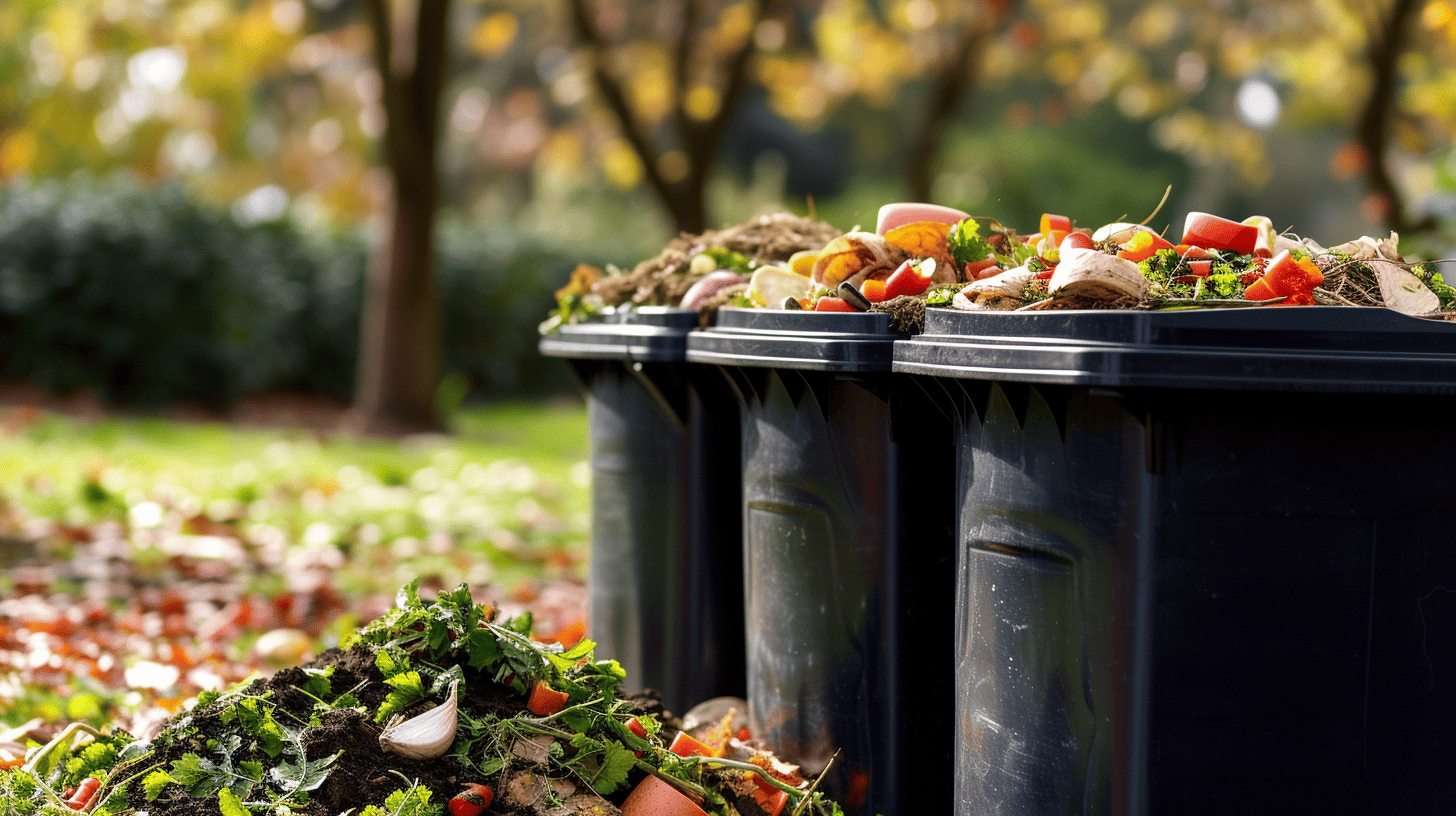



Leave a Reply